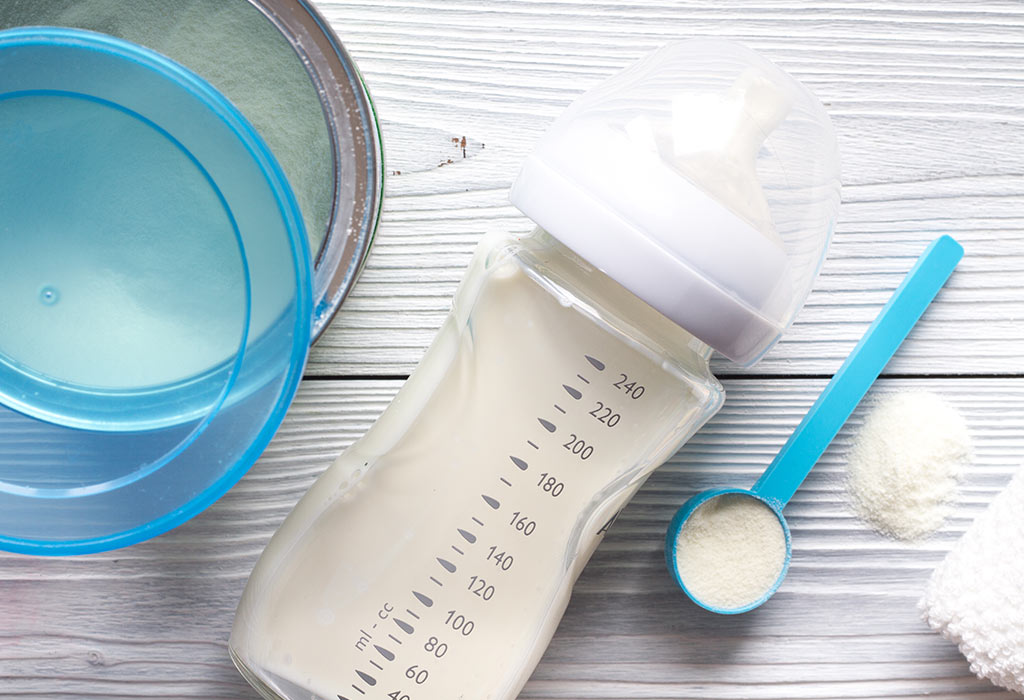Which Milk Should You Choose for Your Infants?

The question of infant nutrition is quite challenging for many new parents. When deciding to feed your baby, it is important to understand what is in breast milk and formula, how they differ, and their effect on your baby’s health and sleep.
What is the difference between breast milk and infant formula?
Let’s start by comparing breast milk to infant formula. In some respects, the formula is similar to breast milk: it contains nutrients, water, and energetically valuable ingredients, so your baby will grow with any diet.
However, despite notable advances in the development and production of infant formula, it does not compare with breast milk in terms of health benefits.
Modern infant milk formulas are made considering that micronutrients (iron, zinc, and some vitamins) are less absorbed from formula feeding than breast milk. The main focus of the manufacturers is to reduce the amount of protein in the formula (a large protein load is undesirable for the excretory system of the baby) while increasing the nutritional value of the product. Scientists working on the composition of the formula try to make it as close as possible to the composition of breast milk. Polyunsaturated fatty acids, nucleotides, and essential micronutrients (selenium, iodine, and others) are added to formulas. However, the perfect balance of amino acids for formulas has not yet been.
What is breast milk composition?
Every drop of breast milk, whether it’s colostrum, which forms a protective coating on a newborn’s stomach mucosa, or breast milk, which promotes child growth and development, contains thousands of beneficial ingredients, including:

-
Antibodies
There are five main types of antibodies, and they are all present in mother’s milk. Antibodies neutralize bacteria and viruses, protecting the baby’s body from infections and disease.
-
Hormones
By the way, there are many hormones in breast milk! These smart chemicals are responsible for exchanging information between tissues and organs, ensuring their normal functioning. Some hormones control appetite, others sleep, and some are even responsible for strengthening the bond between mom and baby.
-
Stem cells and white blood cells
There are millions of living cells. These include white blood cells, which are responsible for strengthening the immune system, and stem cells, which promote the growth and regeneration of organs.
-
Prebiotics – oligosaccharides
More than 200 complex sugars – oligosaccharides – that act as prebiotics, essential for maintaining a healthy gut microflora. In addition, they prevent infections from entering the bloodstream.

-
Long-chain fatty acids
You may have heard about long-chain fatty acids, which play a key role in the formation of the baby’s nervous system and the development of the brain and eyes. Well, breast milk also contains them!
-
Enzymes
More than 40 enzymes. Enzymes catalyze chemical reactions in the body. Enzymes in breast milk stimulate digestion and immunity and help the baby’s body absorb iron.
-
Vitamins and minerals
Nutrients promote normal organ growth and function, as well as tooth and bone formation.
This long list includes only some of the ingredients in breast milk – but scientists are discovering more and more. But it is still not well studied for all the protective functions of breast milk because of its very complex composition. Interestingly, the content of these ingredients varies according to the age and needs of the baby. One of the main advantages of breast milk compared to the formula is that it is alive. It adapts to your baby’s changing needs. When the baby gets sick, breast milk increases the number of white blood cells and antibodies to fight the infection. The protective properties of breast milk are its main feature and a unique result of lactation evolution.
What is infant formula composition?

The composition of the formula varies by country and manufacturer.
The infant formula composition is gradually improving, getting closer and closer to the composition of breast milk. One of the latest steps in their improvement was the addition of lutein, a natural antioxidant found in breast milk, and the probiotic bacteria Bifidobacterium Lactis. The natural prebiotics galacto-oligosaccharides, which existed before, together with the probiotic Bifidobacterium Lactis, form a symbiotic complex. Its components have demonstrated the ability to reduce the frequency of diarrhea, they take part in strengthening the immune system and microflora, and improve digestion in infants.
The infant formula may also include such ingredients as:
- Whey protein and casein are the main proteins in cow’s or goat’s milk. These substances are the main building material for the growing body. Feedings with whey protein predominance are intended for babies from birth to 6 months, with casein – after six months.
- Lactose (milk sugar) improves digestion, provides energy for the growing body, and creates a favorable environment for physiological microflora. In addition, lactose promotes the absorption of iron and calcium.
- Taurine is a free amino acid necessary for the development of the central nervous system and vision.
- Linoleic acid plays an essential role in the formation of the brain and the eye’s retina.
- Probiotics inhibit harmful microflora in the gut and help beneficial microflora multiply, forming immunity.
- Prebiotic fibers stimulate the growth of beneficial microflora, enhance the body’s defenses and regulate digestive function.
- Starch is needed if the baby regurgitates frequently. This ingredient increases the viscosity of the formula in the stomach.
- Modern adapted formulas also contain trace elements essential for the baby’s development, such as zinc, copper, manganese, selenium, and iodine.
- In addition, they are enriched with vitamins, depending on age or purpose. Vitamins are better absorbed from breast milk than formula, so there are more of them in dry food.
- Lutein is an innovative ingredient of the formula. Lutein is not synthesized in the body. The baby receives it only from breast milk. Lutein deficiency leads to irreversible visual impairment.

HIPP Comfort formula is perfect for babies with hypersensitive digestive systems. It is a complex of probiotics and prebiotics, natural fatty acids, and taurine. These ingredients ensure the healthy growth and development of the baby’s whole body, help with colic and bloating, often found in infants. You can find HiPP Comfort formula on the website organicsbestshop.com
When choosing a milk formula for your baby, remember that the infant formula must be balanced in its composition and contain the ingredients necessary for the baby’s healthy development. After all, your baby’s intellectual abilities and vision development depend on how he or she is nourished.




